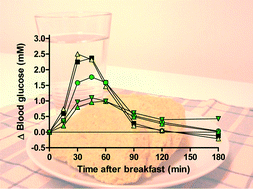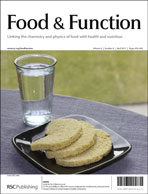Frequent hyperglycaemia is associated with oxidative stress and subclinical inflammation, and thus increased risk of cardiovascular disease. Possibilities of modulating glycaemia, insulinaemia and perceived satiety for bread products were investigated, with emphasis on the course of glycaemia expressed as a glycaemic profile (defined as the duration of the glucose curve above the fasting concentration divided by the incremental glucose peak). For this purpose white wheat bread was supplemented with whole grain corn flour with an elevated amylose content and different types and levels of guar gum. The bread products were characterised in vitro for release of starch degradation products and content of resistant starch. Fibre related fluidity following enzyme hydrolysis was also studied. By combining medium weight guar gum and whole grain corn flour with an elevated amylose content, the course of glycaemia, insulinaemia and subjective appetite ratings were improved compared to the reference white wheat bread. In addition, the combination beneficially influenced the content of resistant starch. Fluidity measurements showed potential to predict the glycaemic profile.

You have access to this article
 Please wait while we load your content...
Something went wrong. Try again?
Please wait while we load your content...
Something went wrong. Try again?


 Please wait while we load your content...
Please wait while we load your content...